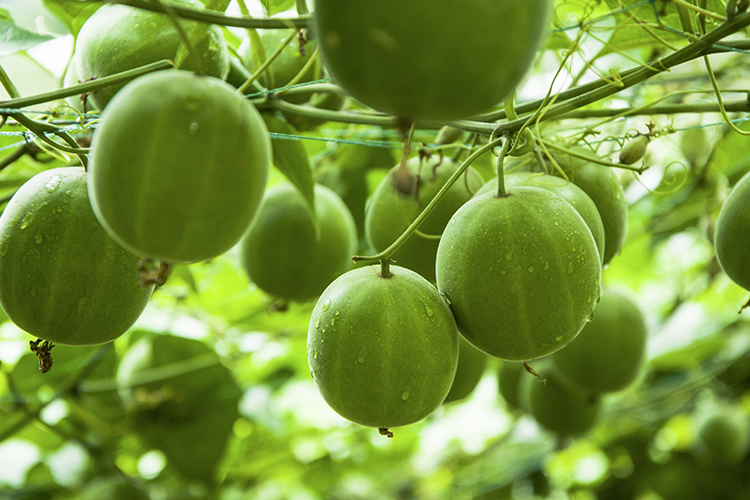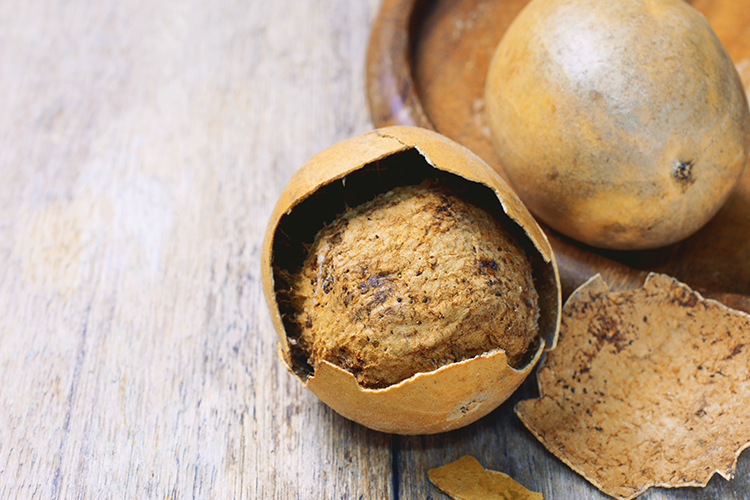Blog
Monk fruit – the new sweetener?
 For many years now alternatives to refined sugar have been gracing supermarket shelves and recipe pages across the web, offering healthier alternatives such as honey, and maple, agave, and rice malt syrups.
For many years now alternatives to refined sugar have been gracing supermarket shelves and recipe pages across the web, offering healthier alternatives such as honey, and maple, agave, and rice malt syrups.
However, as many of us know, the body receives sugar as sugar. Whilst these other sweet offerings each have a different GI and nutritional profile, and enjoying a little is fine for most, if it is removed from its natural source and not packed alongside some fibre ‘n’ fat the body will process the glucose and fructose much the same as if sipping on a soft drink.
But it seems this is not the case for monk fruit.
The Buddha Fruit
The latest sweetener on the block, monk fruit (a.k.a. Luo Han Guo, Longevity Fruit and Buddha Fruit among others), hails from Southeast Asia, and seems almost too good to be true.
It is non-calorific, leaves no nasty aftertaste, is heat stable (cooking and baking ain’t a problem), and has little, if any, negative health impact – at least if it does, we are yet to find out. Yet, it is crazy sweet, considered up 300 times sweeter than sucrose. Whoa!1
The fruit itself contains trace amounts of fructose and glucose – but they aren’t the providers of intense sweetness. That is delivered by the constituents mogroside IV, V and VI.1
Via a rather simple and natural method of processing, the mogrosides are extracted from the fruit into a powdered extract or liquid concentrate, whilst being separated from the other naturally occurring sugars.
What is remarkable about mogrosides is they are zero kilojoule, and appear to have no impact on blood glucose. It seems they are metabolized differently in humans compared with more conventional purveyors of sweetness. Studies into this are in early days.2
An ancient medicine
In Traditional Chinese Medicine, it has been dubbed ‘the immortal’s fruit’ used medicinally for many years to treat coughs and colds, gastrointestinal issues, diabetes, and as an anti-inflammatory agent.
Mogrosides have also been assessed for antioxidant, anti-inflammatory, anticancer, antiviral, anti-hyperglycaemic and anti-diabetic activity, though often in quite high doses (more than what one would use in making a sweet treat).1
This all sounds kind of great, right?
Monk fruit in early days
Retraining our taste buds to want the sweet stuff less is definitely helpful when trying to reduce overall added sugar intake.
But when we want a little something-something, and you feel fruit alone ain’t gonna cut it, could the extract from the mighty monk be worth considering?
Long-term or excessive consumption of the extract is yet to be extensively studied, especially in humans. Yet it is considered safe for consumption, even in pregnancy.
However, the stuff we can buy may be cut with a selection of fillers or other sugars. Read the label, and avoid the additional ingredients if you choose to use.
Here at That Sugar, we first-and-foremost advocate enjoying real, whole foods. Fruits like stewed apple, mashed banana, or a medjool date or two can be great sweeteners!
Despite research into monk fruit being in early days, it looks promising. It certainly seems to be rising in popularity. And who know, if could be a good, if pricey (yet better than refined sugar) option, for those wanting a little extra something-something.
By Angela Johnson (BHSc Nut. Med.)
References
- Pawar, R, Krynitsky, A, & Rader, J 2013, ‘Sweeteners from plants-with emphasis on Stevia rebaudiana (Bertoni) and Siraitia grosvenorii (Swingle)’, Analytical & Bioanalytical Chemistry, vol. 405, no. 13, pp. 4397-4407.
- Xu, F, Li, D, Huang, Z, Lu, F, Wang, L, Huang, Y, Wang, R, Liu, G, Shang, M, & Cai, S 2015, ‘Exploring in vitro, in vivo metabolism of mogroside V and distribution of its metabolites in rats by HPLC-ESI-IT-TOF-MSn’, Journal of Pharmaceutical and Biomedical Analysis, vol. 115, pp. 418-430.












